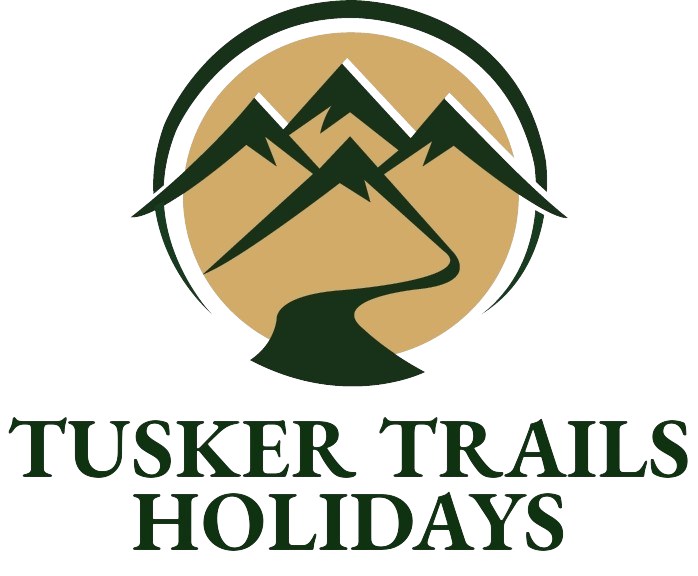Kibale National Park
Located in southern Uganda, Kibale National Park is one of Uganda’s most remarkable and diverse wildlife sanctuaries. It covers an area of 766 square kilometres, ranging from 1,100 to 1,600 metres in elevation. It is home to the largest population of chimpanzees in Uganda, as well as 12 other species of primates. It also boasts over 300 species of trees, 375 species of birds, and numerous mammals, reptiles, amphibians, and butterflies.
Kibale Forest National Park is not just a forest, but a mosaic of different landscapes. It encompasses primarily moist evergreen forest, but also includes patches of grassland, swamp, and plantation. The park is contiguous with Queen Elizabeth National Park, forming a wildlife corridor that spans over 180 kilometres. The park’s scenery is stunning, with rolling hills, valleys, craters, and rivers. The park is also rich in cultural heritage, with two major tribes, the Batooro and Bakiga, living around it and using its resources sustainably.
Wildlife in Kibale Forest National Park
The main attraction of Kibale Forest National Park is its primates. The park hosts the highest diversity and concentration of primates in Africa, with 13 species recorded. The most famous of these are the chimpanzees, our closest living relatives. The park has over 1,000 chimpanzees, divided into several habituated communities that can be visited by tourists. These intelligent and social animals are fascinating to watch as they interact, groom, play, hunt, and communicate with each other. They are also very vocal, producing loud calls that can be heard from far away.
Other primates that can be seen in Kibale Forest National Park include the endangered red colobus monkey, the rare L’Hoest’s monkey, the black-and-white colobus monkey, the blue monkey, the red-tailed monkey, the grey-cheeked mangabey, the olive baboon, the vervet monkey, the nocturnal potto, and three species of bushbaby. Each of these primates has its own unique features and behaviours that make them interesting to observe.
Besides primates, Kibale Forest National Park also has a variety of other wildlife species. Some of the mammals that can be spotted in the park are elephants, buffaloes, leopards, lions (rarely), bush pigs, giant forest hogs, duikers, mongooses, civets, otters, and golden cats. The park is also a birdwatcher’s paradise, with over 375 species of birds recorded. Some of the notable birds are the great blue turaco, the African grey parrot, the green-breasted pitta, the black bee-eater, the crowned eagle, and several species of hornbills and kingfishers. The park also has a rich diversity of plants and flowers that provide food and shelter for the wildlife.
Things to do in Kibale Forest National Park
Chimpanzee Tracking
There are many activities that can be enjoyed in Kibale Forest National Park. The most popular one is chimpanzee tracking, which involves following a group of habituated chimpanzees through the forest with a guide. This activity requires booking in advance and paying a fee. The tracking can take from one to four hours depending on where the chimpanzees are located. Once you find them, you can spend up to one hour with them at a safe distance. This is an unforgettable experience that will give you a glimpse into their complex lives.
Chimpanzee Habituation
Another activity that is similar to chimpanzee tracking is chimpanzee habituation. This is a more immersive and exclusive experience that allows you to spend a whole day with a group of chimpanzees that are being habituated to human presence. You can join the researchers and trackers as they follow the chimpanzees from dawn to dusk, observing their daily activities and learning more about their behaviour and ecology. This activity is only available during certain months of the year and requires booking well in advance.
Birding
If you are interested in birds, you can also go for birding in Kibale Forest National Park. The park has several trails that offer excellent opportunities for birdwatching. You can hire a guide who will help you identify the different species and point out their calls and habits. Some of the best trails for birding are the Kanyanchu River Trail, the Bigodi Wetland Trail, and the Sebitoli Forest Trail. You can also visit the nearby Magombe Swamp, which is a community-run wetland that hosts many waterbirds and primates.
Other Activities
Other activities that can be done in Kibale Forest National Park are nature walks, cultural visits, crater lake exploration, and night walks. Nature walks allow you to explore the different habitats and landscapes of the park, as well as see some of the smaller creatures like butterflies, frogs, and insects. Cultural visits allow you to interact with the local communities and learn about their traditions and livelihoods. Crater lake exploration allows you to enjoy the scenic views of the volcanic lakes that dot the park’s surroundings. Night walks allow you to see some of the nocturnal animals that are active after dark, such as bushbabies, pottos, civets, and nightjars.
Frequently Asked Questions
Here are some of the common questions that visitors may have about Kibale Forest National Park:
When is the best time to visit Kibale Forest National Park?
The best time to visit Kibale Forest National Park is during the dry seasons, which are from December to February and from June to September. During these periods, the trails are less muddy and slippery, and the visibility is better. However, the park can be visited all year round, as the weather is generally mild and pleasant. The rainy seasons, which are from March to May and from October to November, may offer some advantages, such as fewer tourists, lower prices, and more lush vegetation.
How do I get to Kibale Forest National Park?
Kibale Forest National Park is located about 320 kilometres west of Kampala, Uganda’s capital city. The easiest way to get there is by road, either by private car or by public bus. The journey takes about five to six hours depending on the traffic and road conditions. The main entrance to the park is at Kanyanchu Visitor Centre, which is about 36 kilometres south of Fort Portal town. There are also other minor entrances at Sebitoli and Bigodi.
Alternatively, you can also fly to Kibale Forest National Park by charter plane. There are several airstrips near the park that can accommodate small aircrafts. The nearest ones are at Nyakisharara (near Mbarara), Kasese (near Queen Elizabeth National Park), and Toro-Semliki (near Semliki National Park). The flight takes about one hour from Entebbe International Airport.
Where can I stay in Kibale Forest National Park?
There are various accommodation options in and around Kibale Forest National Park to suit different budgets and preferences. Inside the park, there are two lodges that offer comfortable rooms with ensuite facilities: Primate Lodge Kibale and Kibale Forest Camp. There are also several campsites that offer basic facilities for those who want to camp: Chimpanzee Guesthouse Campsite, Rweetera Safari Campsite, Nyinabulitwa Resort Campsite, and Sebitoli Campsite.
Outside the park, there are more lodges and guesthouses that offer different levels of comfort and service: Ndali Lodge, Crater Safari Lodge, Isunga Lodge, Turaco Treetops Lodge, Papaya Lake Lodge, Chimpanzee Forest Guesthouse, Rweteera Safari Park Lodge, Chimps’ Nest Lodge, Kyaninga Lodge, Mountains of the Moon Hotel, Fort Motel, Ruwenzori View Guesthouse, and Dutchess Boutique Hotel.

